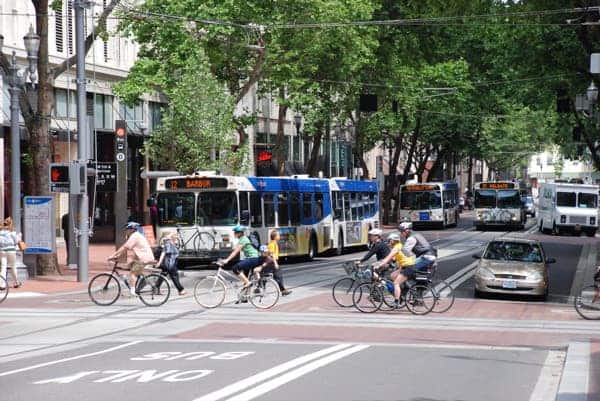In America, walkable neighborhoods are a privilege for the rich and educated.
For the first time in history, we’ve tipped the urban-rural balance in favor of the former. Today, 54 percent of the world’s population lives in urban areas, which is expected to grow to 66 percent by 2050. But even with more and more people living in cities worldwide, we still don’t understand many of the ways through which cities affect our lives. Urbanist scholars have now published a new report, the first one which analyzes the effects of walkable places on the wealth and equity of metros in the US.
A walkable neighborhood is defined as having a center (whether it’s a street or a public place), a pedestrian-centered design (with building close to the streets and parking lots in the back, as well as pedestrian and bike passages), and where businesses, schools, and administration points are within walking distance of each other. Christopher Leinberger and Michael Rodriguez at The George Washington University School of Business ranked the walkability for America’s 30 largest metros using data on 619 walkable urban neighborhoods.
The ranking was done based on their walk scores and large concentrations of office and/or retail space. They then examined how metro walkability can be connected to other factors such as economic development (based on GDP per capita), educational attainment (the share of adults with college degrees), and social equity (based on housing and transportation costs, as well as the number of jobs near a given residence). The results were surprising.
The first find was that walkable neighborhoods occupy just 1% of land mass across the 30 biggest metros. However, they account for most office and multi-family rental development (ie not small houses). They also found a strong correlation between walkability and GDP per capita. Walkable neighborhoods also host more educated people, likely driven by denser knowledge hubs. So walkable neighborhoods are really rare, and they’re usually occupied by the rich and more educated. However, we shouldn’t jump to conclusions just yet, especially as causality was not established.
Walkability significantly benefits our health, the environment, our finances, and our communities. The average resident of a walkable neighborhood weighs 6-10 pounds less than someone who lives in a sprawling neighborhood.










